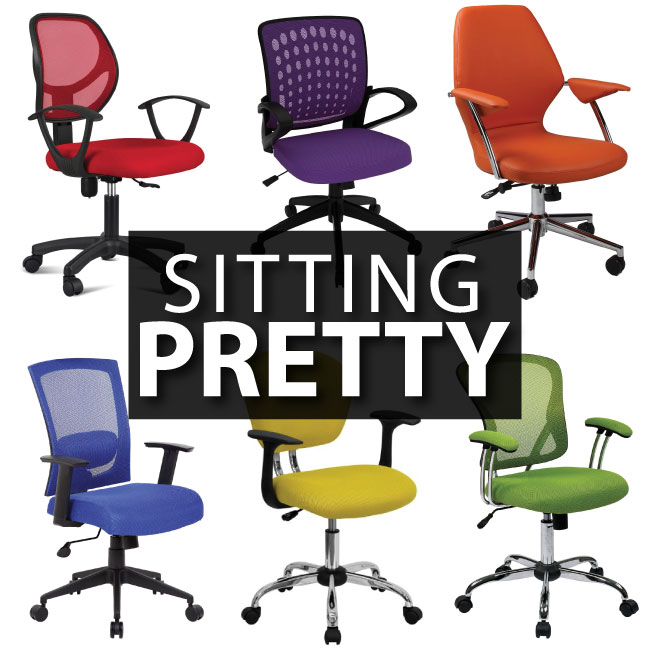Finding the perfect desk chair can be like looking for a needle in a haystack. There’s an overwhelming number of styles, colors and price points to choose from. When you finally do make a selection, the next step is figuring out how to adjust all those levers and knobs.
Here are a few adjustment tips that will have you sitting pretty and being super productive.
CHECK YOURSELF
Before you start adjusting your chair, make sure that you are sitting properly. It’s pointless to adjust a chair to a position that reinforces bad posture, or even worse, causes new issues with muscle strain and soreness. Start by following your Mother’s advice: sit up straight with your feet on the floor.
PUT YOUR BACK INTO IT
When you are seated for a long period of time it’s important to have a chair that supports the lower back. Not having the adequate back support adds stress to structures in the spine which can lead to (or compound existing) back problems.
Your chair should fit like a glove. The backrest should extend above your shoulders and should support your lower back. Look for a chair with an adjustable backrest that can be customized to follow the natural shape of your spine without leaving any gaps or spaces. If the backrest still doesn’t feel quite right even after all the adjustments, consider getting a lumbar support. Lumbar supports are designed to fit the curvature of your back while adding additional support and padding.
HOW HIGH?
Your chair should be set at a height that allows you bend your knees at a 90 degree angle while having your thighs parallel to the desk. Being able to work comfortably with your feet flat on the ground can help with your posture, circulation and keep your back aligned. If you are “vertically challenged”, try using a footrest to help keep your feet flat and your weight properly distributed. For those of you working on an elevated surface, such as a drafting desk, be sure to select a chair with a foot rail so that you can comfortably rest your feet.
Adjust the arm supports on your chair to a height that allows your shoulders to relax without extending your elbows while working. Proper arm support can prevent tight shoulder muscles and overall discomfort.
ROLL OUT
Make sure the casters (wheels) on your chair are high quality. You should feel like you are sitting on a secure base when you are stationary, but you should also able to glide smoothly around your work space when you need mobility. Use a chair mat if you have difficulty rolling over your floor surface.
GET BUSY/REPEAT
With all that taken care of, you should feel like you are sitting on a custom-made cloud. Now it’s time to get to work!
Here’s where you can purchase the colorful options pictured above: Red, Purple, Orange, Blue, Yellow, Green
FOLLOW ME


 Multi-faceted Designer, Creative Director & Founder of SCOTCHBONNET! Accessories
Multi-faceted Designer, Creative Director & Founder of SCOTCHBONNET! Accessories